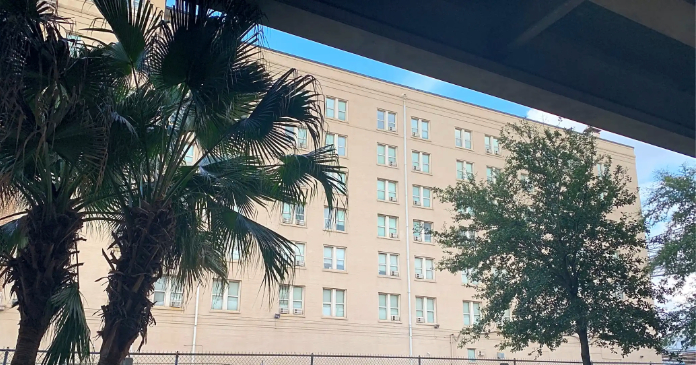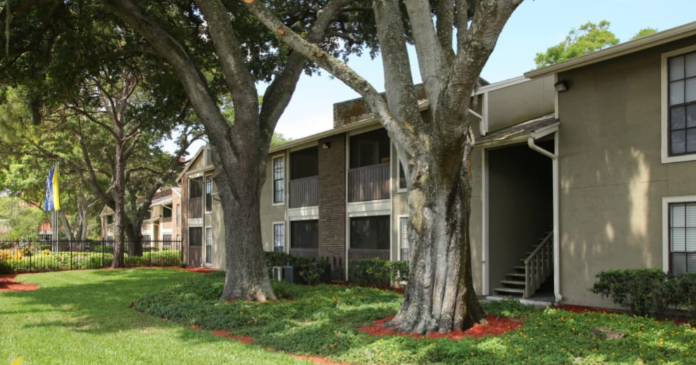“There are really only three choices — foreclosure, loan modification or a punt for a little while to see if the borrower can come in with more money,” said Manus Clancy, senior managing director at credit ratings firm Trepp LLC, in late November. He has been following the mortgage closely and believes the latter forbearance scenario is unlikely.
“The buyers are so far under water that it doesn’t seem to make economic sense to throw more money into it without some sort of modification. So its either loan modification or foreclosure,” he said.
In the most expensive single apartment transaction in history, Tishman and BlackRock acquired Stuyvesant Town and Peter Cooper Village for $5.4 billion in October 2006 from MetLife, which built the sprawling brick complexes, with the help of tax credits and the city’s use of eminent domain, after World War II to provide housing for returning soldiers and their families.
Tishman and BlackRock took advantage of easy credit terms at the height of the housing boom to buy the 80-percent rent-regulated property on the assumption that rents and occupancy would continue to rise. They paid a sky-high price predicated on plans to accelerate the seller’s ongoing efforts to oust tenants from rent-regulated apartments, upgrade and re-rent the units at market rate. New York City’s rent stabilization rules state an apartment can be deregulated once it becomes vacant or the rent reaches $2,000 and the existing resident’s household income rises above $175,000 for two consecutive years.
By the time of the sale, MetLife had converted 27 percent of the property’s units to market rate. Claiming many of the property’s residents did not qualify for the lower rents, Tishman and BlackRock aimed at bringing that percentage to more than half by 2011. But apartment rents nationwide have fallen steadily since 2007 in the economic downturn and the buyer’s conversion efforts moved slower than planned.
The property was never able to generate enough cash flow to cover debt service requirements, said Clancy. To compound the owners’ problems, tenants sued, accusing the landlords of improperly raising rents while receiving tax breaks under the city’s J-51 tax credit program, which offers property tax abatements to landlords who fix up older communities and register them as rent-stabilized. In the case of StuyTown/Peter Cooper, those tax abatements totaling $24.5 million began in 1992, when Metlife still owned the property, and will run out in 2017.
In March, the appellate division of New York Supreme Court found that the buyers and the original owner MetLife wrongfully deregulated around 4,350 apartments while receiving tax breaks from the city. A week later, New York State’s highest court agreed. The case could drag on for months or even years. It has been remanded back to the lower courts, which could force Tishman to refund hundreds of millions of dollars in rent overcharges.
Meanwhile, Tishman and BlackRock are bleeding money. Although not technically in default, they have $6.7 million left in their reserve funds used to upgrade apartments, fuel evictions and escrow the difference between market-rate and rent-regulated units while awaiting the outcome of the lawsuit brought by the tenants.
Those funds will vanish in a few weeks, credit rating agency RealPoint LLC predicted at the end of November.
Tishman and BlackRock stand to lose $112.5 million of the total $1.9 million equity raise, but the biggest losers are investors like California Public Employees’ Retirement System (CalPERS), California State Teachers’ Retirement System (Calstrs) and the Government of Singapore Investment Corp (GIC). Analysts believe anyone with less than a senior position in the deal already has been wiped out. The Florida state pension fund, for instance, wrote down its $250 million equity investment in the deal in May.
Clancy believes any debt restructuring by the special servicer will be complicated, since the mortgages were cut up and repackaged with other loans into five CMBS pools and sold to a variety of investors. Some of the biggest holders are the government-sponsored entities Fannie Mae and Freddie Mac, which own $1.5 billion of the CMBS debt. Another $1.4 billion mezzanine loan held by SL Green and others was privately placed.
The special servicer will look to return as much money to the bondholders as possible, said Clancy, noting that could happen through a sale, although it will be difficult to know how much the property is worth. Another credit rating service, Fitch, recently put the value of the property at $1.8 billion.
Some industry watchers speculate that the Tishman/BlackRock partnership could ask for a public bailout through TALF (the Term Asset-Backed Securities Loan Facility) established by the New York Federal Reserve to provide non-recourse funding to any eligible borrower owning eligible collateral. “The requests for bailouts have been plentiful, beyond commercial real estate. Every industry has had their eye on that kind of relief, so why not, you can’t rule out that they could go ask,” said Clancy.
Collateral damage
Fallout from the courts’ ruling in the StuyTown-Peter Cooper Village case already is rippling through New York City as tenants of other rent-regulated buildings prepare to follow the lead of StuyTown residents. Clancy believes the ruling could affect another 80,000 NYC units. “When the news of the ruling first broke, we identified thousands of properties that could take a similar position. That’s a lot of pressure placed on landlords and borrowers to establish definitively that they haven’t violated J-51. For those who haven’t, it’s a nuisance cost because they will still have to prove it. But for those that have, I think they are very concerned what remedy the courts will issue. We found somewhere near 400 or 500 of these properties in CMBS alone, so it’s substantial,” said Clancy.
The StuyTown deal is just the latest unfortunate investment for Tishman Speyer. The company is in default on another huge loan tied to one of the largest office portfolios in Washington D.C. and Archstone Smith, the huge apartment REIT Tishman bought for around $21 billion on leverage at the top of the market is selling assets into a down market and struggling to stay afloat.
















